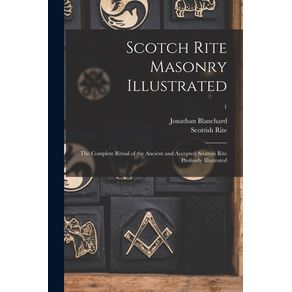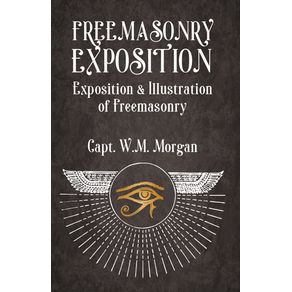| Selo | Books Express Publishing |
|---|---|
| Edição | 0 |
| Idioma | Inglês |
| Autores | Jeannette Williams |
| Acabamento | Capa Comum |
| Quantidade de Páginas | 52 |
| Origem | Literatura Estrangeira |
 Ensaios de A a Z para mentes inquietas
Ensaios de A a Z para mentes inquietas
Ferreira Branco, Clécio
R$ 69,90 à vista Conceitos e categorias do ensino de Sociologia, vol.1
Conceitos e categorias do ensino de Sociologia, vol.1
Editora Café com Sociologia
R$ 43,90 à vista Fazer-se um corpo no funk
Fazer-se um corpo no funk
Editora Viseu
R$ 40,90 à vista Pineal Gland Hardcover
Pineal Gland Hardcover
Lushena Books
R$ 98,88 à vista $2.00 a Day
$2.00 a Day
HARPERCOLLINS
R$ 132,55 ou até 2x sem juros Polemica in Difesa Della Scuola Criminale Positiva
Polemica in Difesa Della Scuola Criminale Positiva
Legare Street Press
R$ 240,89 ou até 3x sem juros Early Greek Myth
Early Greek Myth
Hopkins Fulfillment Service
R$ 340,67 ou até 3x sem juros Genres of Listening
Genres of Listening
Duke University Press
R$ 230,93 ou até 3x sem juros TROLLRÚN
TROLLRÚN
Hadean Press Limited
R$ 182,59 ou até 3x sem juros Social Research
Social Research
McGraw-Hill
R$ 324,62 ou até 3x sem juros Les Fables de la Fontaine
Les Fables de la Fontaine
Books on Demand
R$ 229,30 ou até 3x sem juros International Handbook of Population Policies
International Handbook of Population Policies
Springer Nature B.V.
R$ 2.268,03 ou até 3x sem juros Clearing the Waters
Clearing the Waters
Hadean Press Limited
R$ 123,90 ou até 2x sem juros Margaret Mahler
Margaret Mahler
McFarland and Company, Inc.
R$ 293,14 ou até 3x sem juros A Brief History of Panics and Their Periodical Occurrence in the United States
A Brief History of Panics and Their Periodical Occurrence in the United States
Alpha Editions
R$ 102,04 ou até 2x sem juros Conceitos e categorias do ensino de Sociologia, vol.1
Conceitos e categorias do ensino de Sociologia, vol.1
Editora Café com Sociologia
R$ 43,90 à vista Processos da cena cosplay: Conexões entre jogo e teatro na prática em São Luís
Processos da cena cosplay: Conexões entre jogo e teatro na prática em São Luís
Editora Viseu
R$ 40,90 à vista A ação coletiva e seus sentidos
A ação coletiva e seus sentidos
Editora Viseu
R$ 98,90 à vista Fazer-se um corpo no funk
Fazer-se um corpo no funk
Editora Viseu
R$ 40,90 à vista Maçonaria de A a Z
Maçonaria de A a Z
Omnia Veritas Ltd
R$ 177,83 ou até 3x sem juros TV Lobotomy
TV Lobotomy
Max Milo Editions
R$ 157,43 ou até 3x sem juros $2.00 a Day
$2.00 a Day
HARPERCOLLINS
R$ 132,55 ou até 2x sem juros Polemica in Difesa Della Scuola Criminale Positiva
Polemica in Difesa Della Scuola Criminale Positiva
Legare Street Press
R$ 240,89 ou até 3x sem juros The Definitive Guide to Thriving on Disruption
The Definitive Guide to Thriving on Disruption
Disruptive Futures Institute
R$ 250,93 ou até 3x sem juros Early Greek Myth
Early Greek Myth
Hopkins Fulfillment Service
R$ 340,67 ou até 3x sem juros Social Research
Social Research
McGraw-Hill
R$ 324,62 ou até 3x sem juros Les Fables de la Fontaine
Les Fables de la Fontaine
Books on Demand
R$ 229,30 ou até 3x sem juros International Handbook of Population Policies
International Handbook of Population Policies
Springer Nature B.V.
R$ 2.268,03 ou até 3x sem juros Scotch Rite Masonry Illustrated
Scotch Rite Masonry Illustrated
Legare Street Press
R$ 196,99 ou até 3x sem juros Doing Document Analysis
Doing Document Analysis
Sage Publications
R$ 388,03 ou até 3x sem juros TDICs e Sociologia: propostas pedago?gicas (volume 1)
TDICs e Sociologia: propostas pedago?gicas (volume 1)
Editora Café com Sociologia
R$ 45,90 à vista Conceitos e categorias do ensino de Sociologia, vol.1
Conceitos e categorias do ensino de Sociologia, vol.1
Editora Café com Sociologia
R$ 43,90 à vista Língua Nheengatu: A situação sociolinguística e de letramento dos professores e alunos das escolas indígenas do municíp
Língua Nheengatu: A situação sociolinguística e de letramento dos professores e alunos das escolas indígenas do municíp
Dom Modesto
R$ 119,90 ou até 2x sem juros Sete lições sobre as interpretações do Brasil
Sete lições sobre as interpretações do Brasil
Alameda
R$ 95,00 à vista O Enfraquecimento do Pai
O Enfraquecimento do Pai
Editora Viseu
R$ 40,90 à vista Fazer-se um corpo no funk
Fazer-se um corpo no funk
Editora Viseu
R$ 40,90 à vista $2.00 a Day
$2.00 a Day
HARPERCOLLINS
R$ 132,55 ou até 2x sem juros Early Greek Myth
Early Greek Myth
Hopkins Fulfillment Service
R$ 340,67 ou até 3x sem juros Social Research
Social Research
McGraw-Hill
R$ 324,62 ou até 3x sem juros International Handbook of Population Policies
International Handbook of Population Policies
Springer Nature B.V.
R$ 2.268,03 ou até 3x sem juros Scotch Rite Masonry Illustrated
Scotch Rite Masonry Illustrated
Legare Street Press
R$ 196,99 ou até 3x sem juros Freemasonry Exposition
Freemasonry Exposition
Lushena Books
R$ 88,36 à vista Decline and Prosper!
Decline and Prosper!
Springer Nature B.V.
R$ 279,46 ou até 3x sem juros Doing Document Analysis
Doing Document Analysis
Sage Publications
R$ 388,03 ou até 3x sem juros A Brief History of Panics and Their Periodical Occurrence in the United States
A Brief History of Panics and Their Periodical Occurrence in the United States
Alpha Editions
R$ 102,04 ou até 2x sem juros